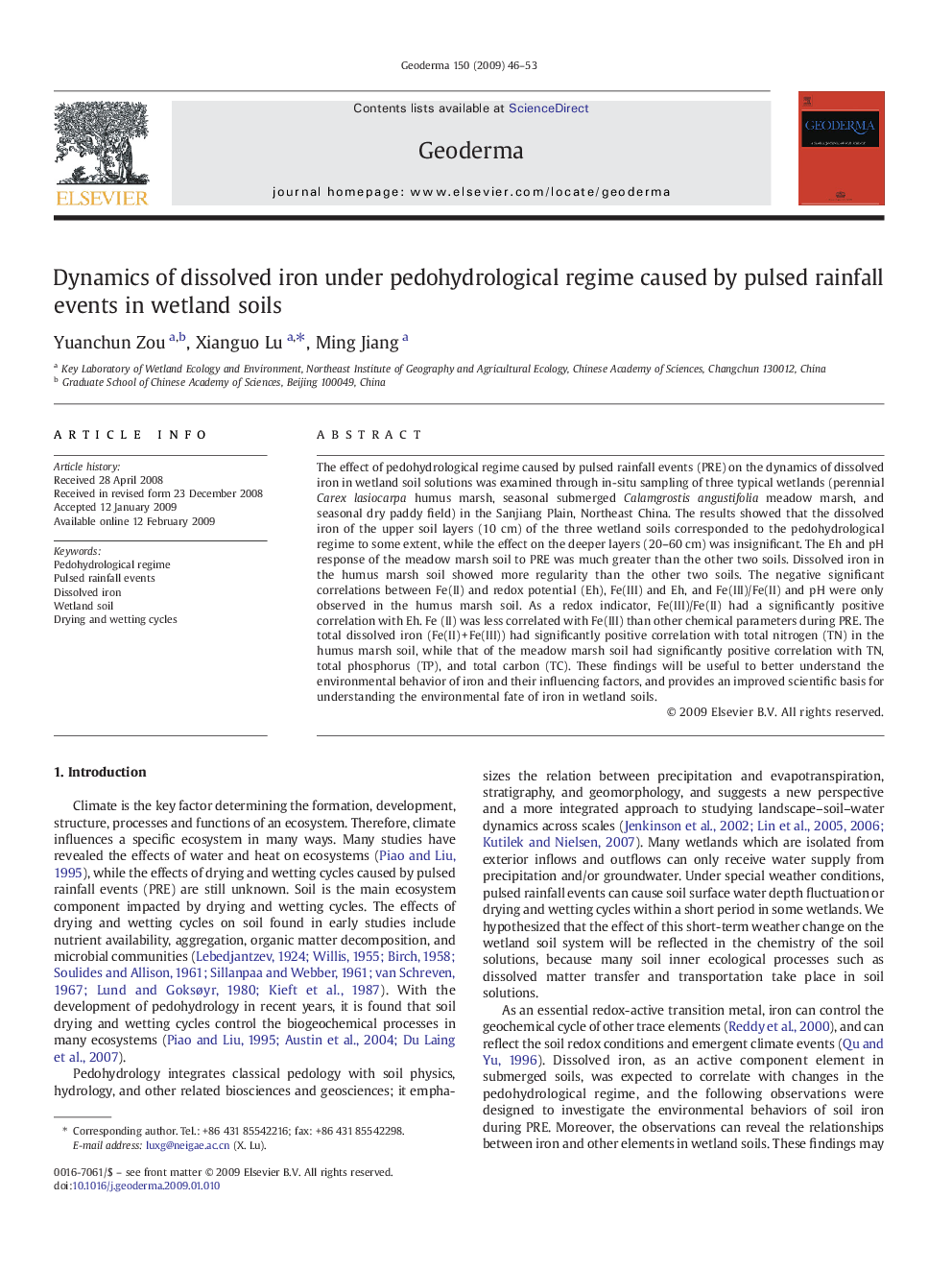| Article ID | Journal | Published Year | Pages | File Type |
|---|---|---|---|---|
| 4574748 | Geoderma | 2009 | 8 Pages |
Abstract
The effect of pedohydrological regime caused by pulsed rainfall events (PRE) on the dynamics of dissolved iron in wetland soil solutions was examined through in-situ sampling of three typical wetlands (perennial Carex lasiocarpa humus marsh, seasonal submerged Calamgrostis angustifolia meadow marsh, and seasonal dry paddy field) in the Sanjiang Plain, Northeast China. The results showed that the dissolved iron of the upper soil layers (10Â cm) of the three wetland soils corresponded to the pedohydrological regime to some extent, while the effect on the deeper layers (20-60Â cm) was insignificant. The Eh and pH response of the meadow marsh soil to PRE was much greater than the other two soils. Dissolved iron in the humus marsh soil showed more regularity than the other two soils. The negative significant correlations between Fe(II) and redox potential (Eh), Fe(III) and Eh, and Fe(III)/Fe(II) and pH were only observed in the humus marsh soil. As a redox indicator, Fe(III)/Fe(II) had a significantly positive correlation with Eh. Fe (II) was less correlated with Fe(III) than other chemical parameters during PRE. The total dissolved iron (Fe(II)Â +Â Fe(III)) had significantly positive correlation with total nitrogen (TN) in the humus marsh soil, while that of the meadow marsh soil had significantly positive correlation with TN, total phosphorus (TP), and total carbon (TC). These findings will be useful to better understand the environmental behavior of iron and their influencing factors, and provides an improved scientific basis for understanding the environmental fate of iron in wetland soils.
Keywords
Related Topics
Physical Sciences and Engineering
Earth and Planetary Sciences
Earth-Surface Processes
Authors
Yuanchun Zou, Xianguo Lu, Ming Jiang,
